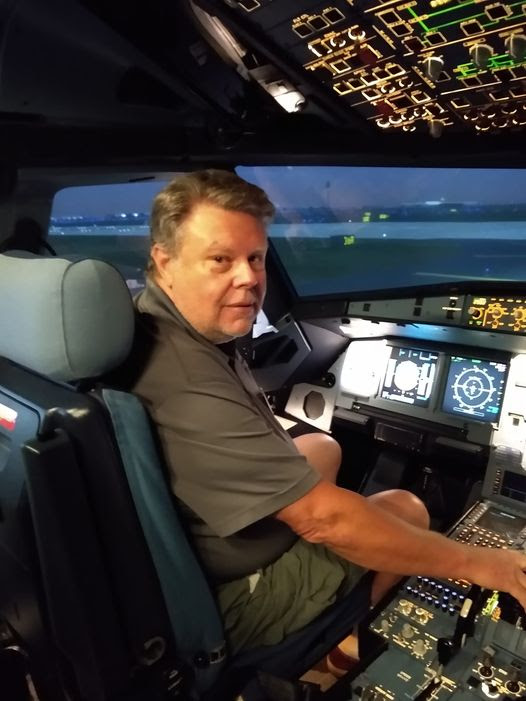ATOP stands for Airline Training Orientation Program. It’s run by Wayne Phillips, or Uncle Wayne as he is affectionately called. Associated with Jet Blue and American, he offers initial orientation training in either a Boeing 737-200 or an AirBus A-320. Since I went to Jet Blue in Orlando, I got the A-320 experience. I learned the Flight Computer was nicknamed Fifi and I learned that no matter how well you treat Fifi, in the end, she still calls you a Retard. Retard! Retard!

We arrived at Jet Blue University in Orlando at MCO just before 8:00am. We signed in, got out temp badges and met in the 2nd floor galley. Right on time, Wayne showed up and we got a quick tour of the training facility showing us the FTD and the full motion SIM we’d use for training.
Then it was to the classroom. The morning session, which ran until about 1:00pm for lunch, was an over view of all the A-320 systems and basic operation of the airplane. This included start up, hydraulic systems, air systems, etc. We covered all the panels of the A-320 starting with the overhead panel, the panel in front of us and the console.
The biggest thing we learned was the throttle on an A-320 has clicks and indents you use. Full forward for takeoff, back two clicks for cruise climb, cruise, descent and approach to landing. You set the speed in the auto-pilot with auto-throttle and the throttle doesn’t move. On short final at 25-30 feet above the runway you pull the throttle back to idle when Fifi calls Retard, Retard.
Flying the A-320 was pretty straight forward. At V1, rotate, you pitch up 15* and it comes right off the runway. After that, you fly the flight director. Positive climb, gear up. At 1000’ pull the throttle back 2 clicks and the auto-throttle automatically sets 250kts for the airspeed. As you accelerate call flaps up.
We flew the pattern at 4000’ with a left 90* turn, a right 270* turn to downwind. Then a descent to 2000’ and slow to 170kts. As we slowed we added flaps 1 and flaps 2. Then another 90* turn to the left, another left turn to intercept the glide slope (remember to put it in approach mode, and fly the flight director all the way down.
Of course the instructor had to play with us a little and we had the master caution light come on. Then it was figure out what we needed to do. The check list displays on one of the center screens and the FO had to figure it out and fix it. We also got to fly in some weather. I ended up in the Thunder Storm getting bounced around. If I had been a real airline pilot I would have had the auto-pilot on, but I wanted to hand fly the plane.
One thing I should mention is we were paired up and we took turns as Pilot and co-pilot. We did get to learn some about CRM (Crew Resource Management), mostly that we weren’t good at it. My co-pilot left me out to dry a few times since he was watching out the windows; however, I did not leave my pilot out to dry when it was his turn.
Was it worth it? Oh yeah. If I was an aspiring airline pilot and I had a couple hundred hours, I would do this in a heartbeat. I think it puts you way ahead of the other prospective airline pilots. If you are like me and too old to fly airlines, then it’s still worth it just to see what it’s all about. For more info check out http://www.atopjets.com/ I’m seriously considering going back for the advanced class.